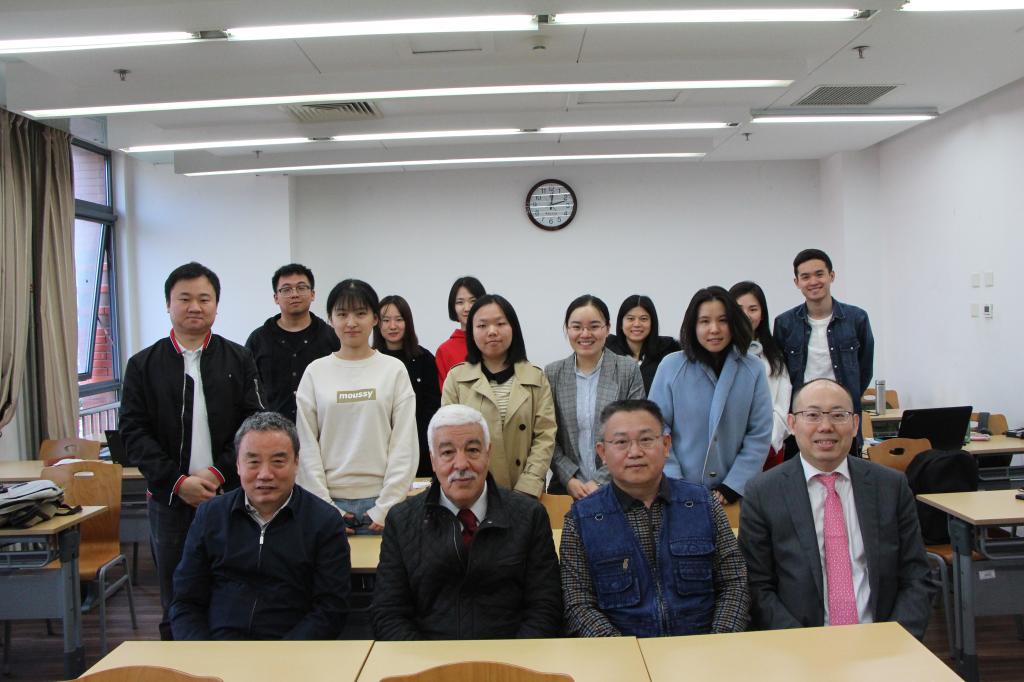At 10 am on April 26, 2019, the 359th Global Human Rights Forum series was held at the A209, Research Building, College Road, China University of Political Science and Law. Professor Lazhari Bouzid, an expert on the Human Rights Advisory Committee of the UN Human Rights Council and teaching at the University of Algeria, gave a wonderful lecture to the students of Human Rights Institute entitled “The History of Drafting ICCPR”.

First, Professor Lazhari briefly described the historical development of human rights. In traditional international law, human rights are rarely addressed. The reason is that people at the time thought that sovereignty was absolute and the state could do whatever they wanted to do. In the slavery society, the slave owner possesses slavery and means of production, and the slave has no freedom to carry out productive labor for the slave owner. In this situation, there is no human rights. With the rise of the bourgeois revolution, the United Kingdom, France and other countries have gradually developed the concept of freedom and equality. After the end of the Second World War, countries began to reflect on and consider the establishment of new international organizations to prevent the recurrence of massive violations of human rights. On October 24, 1945, the United Nations Charter, which entered into force in San Francisco, marked the official establishment of the United Nations. The United Nations is committed to promoting cooperation among nations in international law, international security, economic development, social progress, human rights and the achievement of world peace.
Professor Lazhari then introduced the birth background of the Universal Declaration of Human Rights. Since the Charter of the United Nations only regards respect for human rights and fundamental freedoms as one of the purposes of the United Nations and does not explain what kind of human rights we need, the United Nations decided in 1947 to draft new human rights documents to further explain the concept of human rights and protect human rights. On December 10, 1948, the UN General Assembly adopted Resolution 217A (II) and promulgated the Universal Declaration of Human Rights. However, the declaration exists a few limitations. On the one hand, the declaration is not legally binding on countries. On the other hand, the declaration does not include any implementation and monitoring mechanisms. Although the declaration does not have legal effect, some countries will convert it into domestic law, making the declaration applicable in the process of national judicial decisions. In addition, some scholars believe that the declaration is international custom. Thus, it does have certain binding force.
Professor Lazhari then elaborated on the drafting process of the International Covenant on Civil and Political Rights. Due to the shortcomings of the Universal Declaration of Human Rights, the Human Rights Commission decided to draft a legally binding human rights convention. The content of the Universal Declaration of Human Rights includes civil and political rights as well as economic, social and cultural rights, but there are differences between the two. The former means that the state has to limit its own power, and the latter means that the state must actively assume state obligations, create job opportunities, and provide social security. However, developed countries are more concerned with civil and political rights, while developing countries prefer economic, social and cultural rights, making it difficult for all countries to reach a consensus on all of these human rights in a convention. To address this issue, the Human Rights Commission has drafted two conventions: the International Covenant on Civil and Political Rights and the International Covenant on Economic, Social and Cultural Rights. In 1966, the 21st UN General Assembly finally passed two conventions for signature and ratification by various countries. The two conventions entered into force on January 3 and March 23, 1976.
Finally, Professor Lazhari patiently answered the questions raised by the teachers and students of the Institute of Human Rights, such as “In the future, the treaty body will limit his authority or expand his scope of work”, “For different religions like Islam, Christianity, how can their culture and value be reflected together in ICCPR ".This lecture was successfully concluded with the enthusiastic applause of teachers and students.

Written by Jiasheng HUANG